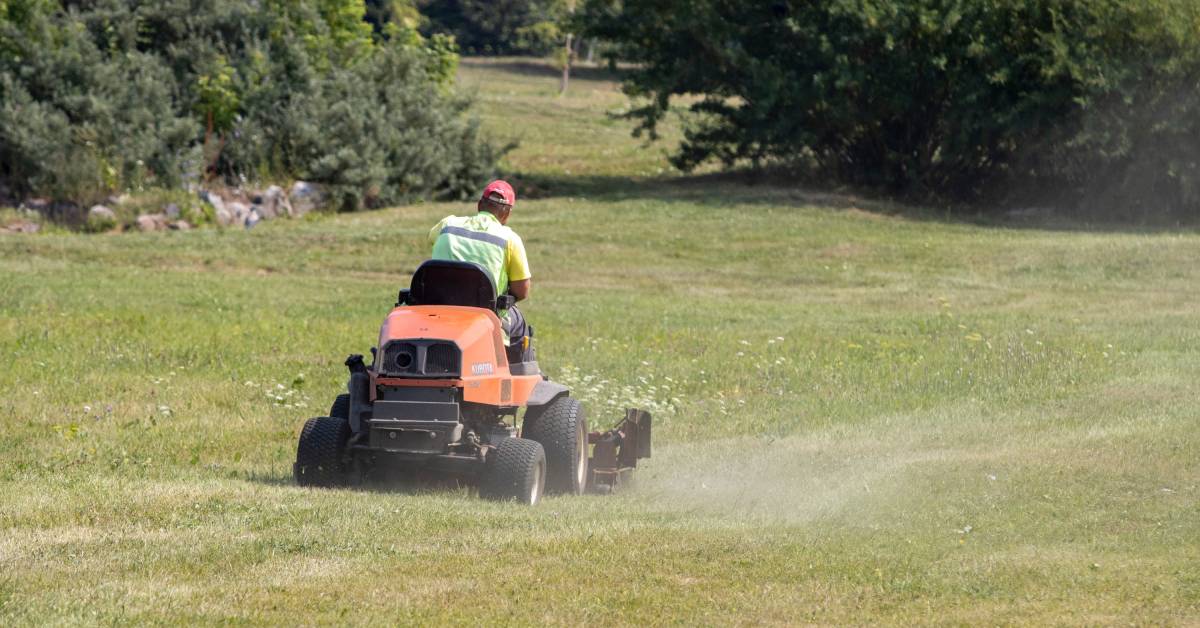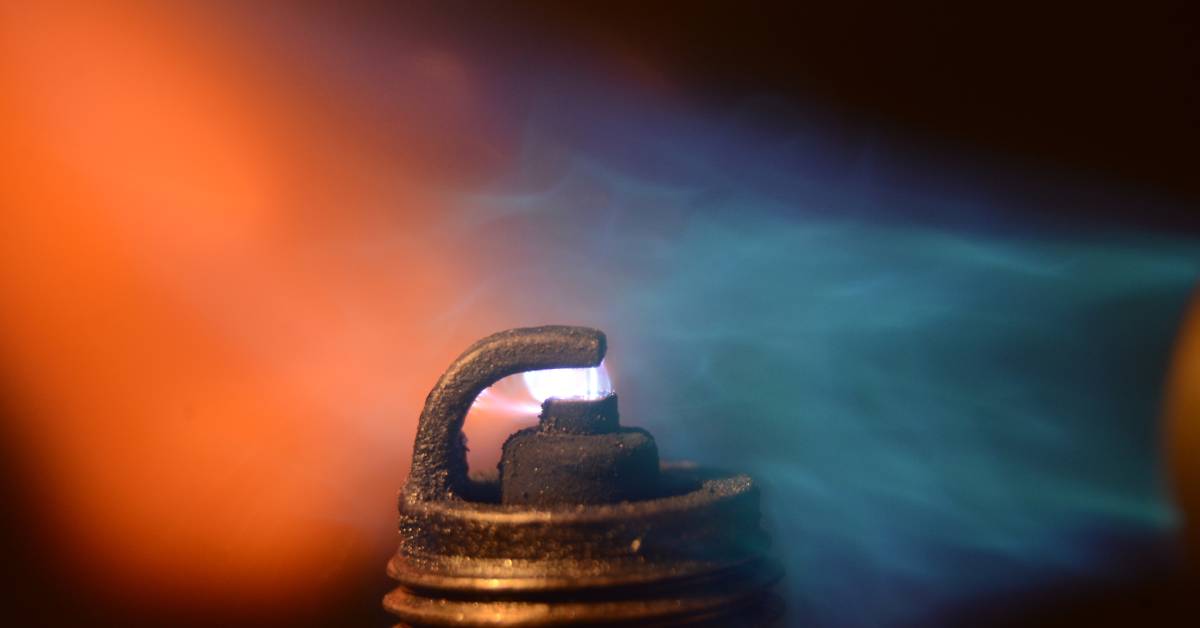
Chainsaws are invaluable tools for landscapers, gardeners, and anyone involved in heavy-duty cutting tasks. In order for owners to maintain their tools’ efficiency and ensure a long operational life span, regular maintenance is mandatory.
Among the various chainsaw components that require maintenance, the spark plug is as important an element as any. Below, we’ll explain everything chainsaw owners need to know about spark plugs, including how they work, the signs of a worn-out one, and the crucial maintenance it requires.
How Chainsaw Spark Plugs Work
Before we get into maintenance tips, let’s discuss what spark plugs are and their function. Spark plugs deliver an electrical spark that ignites the air-fuel mixture in the engine’s combustion chamber. This ignition process is critical for the engine's power generation and overall efficiency.
Each spark plug consists of a terminal, insulator, and electrodes, all working together to produce the necessary spark. After many uses over time, problems can develop that slow down or compromise the spark plug, such as carbon deposits coating the electrodes or the insulator cracking. Regular maintenance and inspections are critical to identifying these issues and preventing them before they destroy the spark plug and compromise the chainsaw.

Signs of a Worn Spark Plug
Recognizing the symptoms of a worn spark plug can prevent minor issues from escalating into significant problems. Often the first sign that the spark plug may need attention is difficulty starting the chainsaw. If you notice that the engine takes longer to start or requires multiple attempts, it could indicate that the spark plug is not delivering a strong enough spark.
Rough idling and reduced power are other common symptoms. When the spark plug is compromised, the engine may run unevenly, causing fluctuations in performance. If these symptoms sound familiar to your chainsaw, you should inspect the spark plug immediately for signs of wear.
How Long Do Spark Plugs Last?
How long can we expect chainsaw spark plugs to last? The life span of a chainsaw spark plug typically ranges from around 100 to 200 hours of operation, depending on the brand and model of the chainsaw, as well as the conditions under which the owner uses it.
For frequent users, this may equate to approximately one season of heavy use. As a best practice, owners should consider spark plug replacement after approximately 100 hours of use to ensure optimal performance and avoid potential engine issues. Regular inspection for signs of wear and deposits will help determine the appropriate timing for replacement.
Why Spark Plug Maintenance Is Crucial for Your Chainsaw
While 100 hours of use is the minimum threshold for a chainsaw, we can’t overstate the importance of proactive spark plug maintenance to extend the life span of the plug as well as the saw. A well-maintained spark plug ensures efficient fuel combustion, leading to better performance and easier use of the chainsaw.
Regular maintenance also minimizes the risk of unexpected breakdowns, which can be both inconvenient and expensive to repair. By keeping the spark plug in good condition, you ensure that the chainsaw operates smoothly, reducing wear and tear on other engine components. This holistic approach to maintenance not only prolongs the life of the spark plug but also enhances the overall durability of the chainsaw.
How To Maintain Your Chainsaw's Spark Plug
Effective maintenance of your chainsaw's spark plug begins with regular inspection and cleaning. Start by removing the spark plug using a spark plug wrench, ensuring the engine is cool before you start. Inspect the electrodes and the insulator for any signs of wear, carbon buildup, or cracking.
Gently clean the electrodes using a wire brush or specialized spark plug cleaner to remove any deposits that may impede performance. It is crucial to check the spark plug gap with a feeler gauge, adjusting it according to the manufacturer’s specifications to ensure optimal spark delivery. Always use the spark plug type specified in the chainsaw’s user manual to avoid compatibility issues and provide reliable performance.
How To Change Your Chainsaw’s Spark Plug
If the spark plug for your chainsaw is beyond repair or at the end of its usefulness, you can replace it yourself with a new one quite easily. To change the spark plug of a chainsaw, ensure the engine is cool and disconnect the spark plug wire to prevent accidental starts. Using a spark plug wrench, turn the plug counterclockwise to remove it.
Inspect the new spark plug's gap with a feeler gauge, adjusting it according to the manufacturer’s specifications if necessary. Hand-thread the new spark plug into the engine, being careful not to cross-thread it, then use the wrench to tighten it securely but avoid over-tightening. Reconnect the spark plug wire and start the chainsaw to verify successful installation.

How To Prolong the Life Span of Your Chainsaw’s Spark Plug
Once you’ve got a new spark plug in the chainsaw, you’ll want to ensure you get the maximum life span and value out of it. Extending your spark plug’s longevity involves a combination of proper use and diligent storage practices. Using high-quality fuel and oil mixtures reduces the buildup of carbon deposits on the spark plug.
Avoiding excessive idling prevents the engine from running in inefficient conditions that can accelerate spark plug wear. Regularly inspecting and cleaning the air filter ensures that clean air passes through to the engine, which is crucial for proper combustion. Storing the chainsaw in a dry, protected environment prevents moisture-related damage to the spark plug and other components.
Other Maintenance Your Chainsaw Requires
While spark plug maintenance is essential, it is only one aspect of chainsaw upkeep. To ensure your tool operates at peak performance, it is crucial to follow all manufacturer-recommended maintenance procedures. This may include regular oil and air filter changes, fuel system cleaning, and overall inspection for wear and tear.
Sharpening the chainsaw's cutting teeth regularly also helps maintain its efficiency and prolong its life span. By staying on top of maintenance tasks, you not only enhance the performance of your chainsaw but also ensure a safe working environment.
Replace Your Chainsaw's Spark Plug With E3 Spark Plugs
We hope our guide helps you maintain and prolong the life span of your chainsaw and its spark plugs. If you need to replace the spark plug of your chainsaw, E3 Spark Plugs is here to help! Our renowned DiamondFIRE spark plug technology outperforms and outlasts other spark plug designs, so you get better performance and more combustion cycles.
Learn more about our spark plug technology online or contact our staff if you have any questions regarding which spark plug is ideal for your chainsaw. Upgrade your chainsaw and feel the difference of E3 Spark Plugs!







